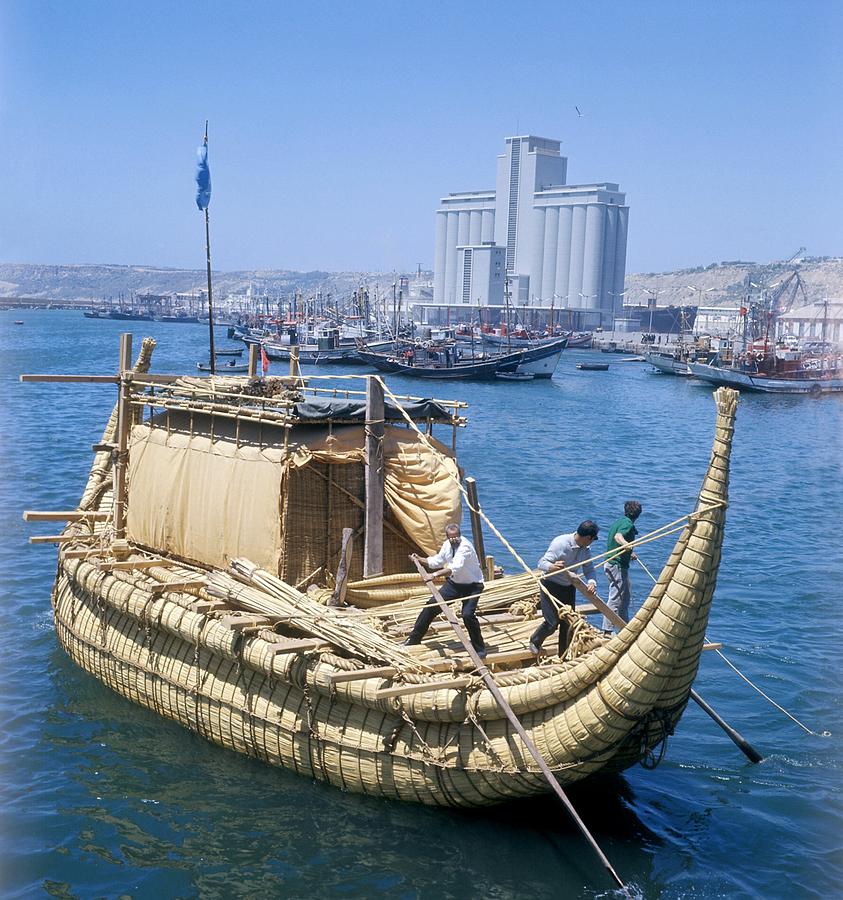

Isaiah communicates to us that these boats were often used to send forth messengers or ambassadors. Isiah makes reference to the papyrus-reed boats, which were known to come from Egypt, used mostly for transportation along the Nile.

#Papyrus reed boats full#
It makes sense that the waters were full of the sails of many ships, which can be compared to wings, and those sails shadowed the waters. “Woe to the land shadowing with wings, which is beyond the rivers of Ethiopia.” The second rendering, in my mind, makes the most sense, for Isaiah goes on to speak of the many vessels that filled the waters around the land of Cush. Others feel it is a reference to the many ships that fill the waters. Some feel the reference to whirring wings refers to insects, possibly mosquitos or locusts. Woe to the land of whirring wings….many of the translations have taken Isaiah 18:1 and transliterated it in different ways. Theirs is a powerful nation divided by rivers.” -(VOICE) “O land abuzz with the whirring of wings, far away past the Ethiopian rivers, With papyrus-reed boats shuttling ambassadors back and forth! Go quickly, you messengers, to those impressive people, those fearsome and terrifying people so lank and smooth. Today’s text conveys to us the urgency that Isaiah felt, the need for the people of Cush to go quickly, and spread the message, Adonai– Tzva’ot‘s judgement is about to come to pass, and it will affect all the world. We will find often in Scripture that the Cushites and Egyptians are mentioned or grouped together when it came to judgement. Something that we need to understand is that the Cushites were related to the Egyptians, through the linage of Ham. This chapter consists of only 7 verses, and one may mistakenly believe that God’s judgement against them was not so severe. We find Isaiah now turning his attention to the land of Cush, or Ethiopia in Isaiah chapter 18. Note: The land of Cush derived its name from Cush, the son of Ham, who was the son of Noah. It should not be confused with modern day Ethiopia, which is further to the south. The land of Cush in the book of Isaiah refers to a land south of Israel and is often translated as Ethiopia in various translations. “God has given believers the responsibility of spreading the Gospel to all the world, and we need to use all at our disposal to accomplish this task.” ~Theodore Epp Go, swift messengers, to a nation tall and smooth (clean shaven), to a people feared far and wide, a powerful and oppressive nation whose land the rivers divide.” -AMPLIFIED “Woe (judgment is coming) to the land of whirring wings which is beyond the rivers of Cush (Ethiopia), which sends ambassadors by the sea, even in vessels of papyrus on the surface of the waters. Go, swift messengers, go to this people tall and handsome, this people held in respect everywhere, this people mighty and merciless, from the land crisscrossed with rivers.” “Doom to the land of flies and mosquitoes beyond the Ethiopian rivers, shipping emissaries all over the world, down rivers and across seas.

Go, swift messengers, to a people tall and smooth-skinned, to a people feared far and wide, an aggressive nation of strange speech, whose land is divided by rivers.” “Woe to the land of whirring wings along the rivers of Cush, which sends envoys by sea in papyrus boats over the water. The model was made 30 years ago.Growing with God: A daily devotional with Tonia Slimm. It is 30 inches long and the mast is 24 inches tall. This model was made in Bolivia of the same papyrus reed used by the Bolivians on the Altiplano to build the reed boats they use today to sail on Lake Titicaca. Suriqui Island is home to the builders of Ra I and Ra II, the totora rafts that crossed the Atlantic Ocean in the 1970s under the command of Thor Heyerdahl. In the Bolivian side, you will find the famous Suriqui, Sun, and Moon Islands. The lake's 8,800 km2 of surface area is shared by Bolivia and Peru. At 3,800 meters above seal level, Lake Titikaka is the highest lake in the world w navigation is possible. On Heyerdahl set sail from Morocco on the papyrus boat Ra II to successfully cross the Atlantic Ocean to Central America. The original Ra took on water and had to be abandoned Heyerdahl thought the cause was that a supporting rope present in the ancient design was omitted in construction. Is a model of Thor Heyerdahl's RA that he built in order to demonstrate that Ancient Egyptians could have communicated with the Americas or transferred pyramid-building technology.


 0 kommentar(er)
0 kommentar(er)
